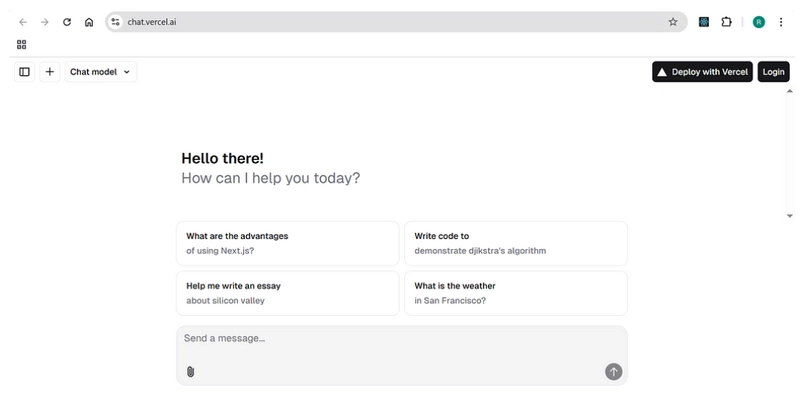Post-Breach Communication – How CISOs Should Talk to the Board
In the high-stakes aftermath of a cybersecurity breach, a CISO’s communication with the board can make or break an organization’s recovery efforts. When security walls crumble, effective leadership through crisis becomes paramount. The modern CISO must transform from a technical guardian into a strategic communicator who can translate complex security incidents into business-relevant insights. This […] The post Post-Breach Communication – How CISOs Should Talk to the Board appeared first on Cyber Security News.
.webp?#)
In the high-stakes aftermath of a cybersecurity breach, a CISO’s communication with the board can make or break an organization’s recovery efforts.
When security walls crumble, effective leadership through crisis becomes paramount. The modern CISO must transform from a technical guardian into a strategic communicator who can translate complex security incidents into business-relevant insights.
This critical skill becomes even more essential as boards face increasing regulatory scrutiny and personal liability for cyber incidents.
Establishing clear, confident, and transparent communication channels during a breach not only aids in immediate incident response but also builds long-term trust and resilience within the organization.
The way a CISO communicates can turn a potential disaster into an opportunity to strengthen the organization’s security posture and leadership standing.
Post-Breach Communication
When a breach occurs, the board will immediately ask: “How bad is it?” This seemingly simple question requires a nuanced response. The art of crisis communication lies in projecting confidence without overpromising.
CISOs must resist the urge to provide definitive answers too early, as investigations evolve quickly and initial assessments often change. Instead, acknowledge the uncertainty while demonstrating control of the situation.
During the critical first hours, avoid silence at all costs it creates an information vacuum that breeds fear and speculation. Issue a clear “hold statement” that acknowledges awareness of the incident, outlines the initial investigation steps, and sets expectations for future updates.
This approach demonstrates leadership and proactive management without oversharing unconfirmed details.
Translate technical information into business language that resonates with board members. Avoid jargon that might alienate non-technical executives or create the impression you’re hiding behind complexity.
Focus initially on business impact rather than technical details discuss potential effects on operations, customers, and regulatory obligations before diving into the technical specifics of the breach.
Communication Strategies for Board Engagement
Creating meaningful dialogue with board members requires strategic approaches that align security concerns with business priorities. The following strategies will help CISOs effectively engage with their boards during breach situations:
- Frame cybersecurity in business terms – Connect the breach to specific business cyber risks, financial implications, and strategic priorities rather than focusing solely on technical vulnerabilities. Help board members understand the incident’s relevance to their oversight responsibilities.
- Use visual aids and analogies – Simplify complex technical concepts through business-relevant analogies that make the situation comprehensible to non-technical board members. Consider comparing security concepts to familiar business scenarios they encounter in other contexts.
- Present tiered information – Structure communications with an executive summary followed by increasingly detailed information. This allows board members to digest the high-level impact quickly while having access to deeper information as needed.
- Establish consistent reporting metrics – Develop and consistently use metrics that help the board track the incident’s evolution and recovery progress. Standardized reporting formats allow for better comparison across time periods and incidents.
- Balance honesty with measured confidence – Acknowledge what isn’t known while clearly articulating the response plan. Board members need to trust that while uncertainty exists, the response is methodical and comprehensive.
Long-Term Trust Through Transparent Communication
The way CISOs communicate during a breach sets the foundation for their relationship with the board long after the incident is resolved. Effective communication builds the credibility needed to secure future resources and support for security initiatives.
Trust develops when board members feel they’re receiving the full picture both positive and negative without unnecessary filtering or delay. This transparency becomes particularly crucial as regulatory requirements increasingly hold boards accountable for cyber risk oversight.
- Establish clear escalation paths and reporting thresholds that define what incidents warrant board notification and when. Having predetermined communication plans prevents ad-hoc decisions during crisis periods.
- Ensure all communications maintain a unified voice regardless of who delivers them. Conflicting messages create confusion and erode trust in leadership.
- Use the heightened awareness following a breach to highlight previously identified security gaps and propose strategic improvements that align with business objectives.
Beyond the immediate breach response, CISOs must work to institutionalize communication pathways with the board. This includes regular updates on evolving threats, changes to the risk landscape, and progress on security initiatives.
By establishing these routines during calm periods, CISOs create familiar channels that function more effectively during crises. This proactive approach demonstrates leadership foresight and creates the foundation for collaborative risk management.
The most successful CISOs recognize that effective communication is not just about managing a crisis but about building a security-conscious culture that starts at the board level and permeates throughout the organization.
When board members understand security risks in business terms, they become powerful allies in driving the security agenda forward.
Find this News Interesting! Follow us on Google News, LinkedIn, & X to Get Instant Updates!
The post Post-Breach Communication – How CISOs Should Talk to the Board appeared first on Cyber Security News.










































































































































































![[The AI Show Episode 144]: ChatGPT’s New Memory, Shopify CEO’s Leaked “AI First” Memo, Google Cloud Next Releases, o3 and o4-mini Coming Soon & Llama 4’s Rocky Launch](https://www.marketingaiinstitute.com/hubfs/ep%20144%20cover.png)






































































































































































































![Blue Archive tier list [April 2025]](https://media.pocketgamer.com/artwork/na-33404-1636469504/blue-archive-screenshot-2.jpg?#)
































.png?#)









-Baldur’s-Gate-3-The-Final-Patch---An-Animated-Short-00-03-43.png?width=1920&height=1920&fit=bounds&quality=70&format=jpg&auto=webp#)






































































































































![Apple to Split Enterprise and Western Europe Roles as VP Exits [Report]](https://www.iclarified.com/images/news/97032/97032/97032-640.jpg)
![Nanoleaf Announces New Pegboard Desk Dock With Dual-Sided Lighting [Video]](https://www.iclarified.com/images/news/97030/97030/97030-640.jpg)

![Apple's Foldable iPhone May Cost Between $2100 and $2300 [Rumor]](https://www.iclarified.com/images/news/97028/97028/97028-640.jpg)


































































































































